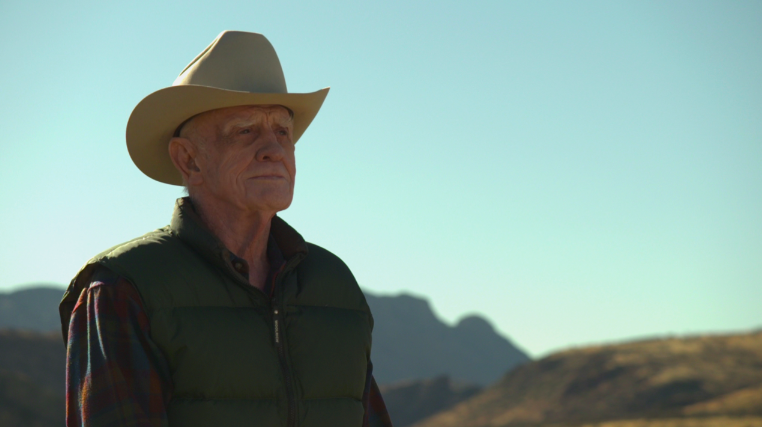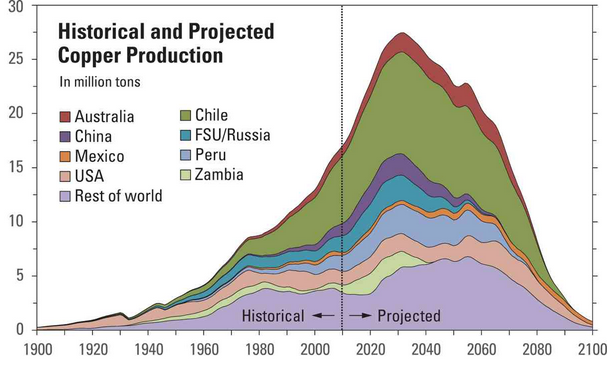This from octogenarian Dave Lowell, arguably the most successful mineral explorationist in history, with the discovery of eighteen ore bodies credited to him, including Escondida, the world’s largest copper mine. Lowell also co-authored the Lowell-Guilbert model for copper porphyry deposits, which has enabled countless more discoveries. The Lowell Institute for Mineral Resources at the University of Arizona is named for him.
While in Tucson, Arizona last week, Bob Moriarty, Travis McPherson and I caught up with Mr. Lowell at his Atascosa Ranch, on the Arizona side of the US / Mexico border, near Nogales. Atascosa has been in Lowell’s family since the 1920′s.

The Intrepid Explorer, Dave Lowell at his ranch in January 2013, photo: Adam Humphreys (CEO.CA)
Mr. Lowell’s office occupies a small building on the property. The room is lined with mementos from a career that has spanned over six decades.
Sitting behind his desk, Lowell handed me a Richard A. Kerr article from Science magazine called The Coming Copper Peak, which discussed an academic model theorizing how much copper will be produced on the planet. The model expects copper production peaking in the late 2030′s. Following the peak, copper can’t be extracted any faster, no matter the price.

Credits: ADAPTED FROM S. NORTHEY ET AL., RESOURCES, CONSERVATION AND RECYCLING 83 (FEBRUARY 2014) © PUBLISHED BY ELSEVIER B.V.
Of course, human ingenuity could alter the picture. Lowell’s own experience pioneering the hunt for porphyry deposits helped the copper price to trend lower during the 1900′s, until the China bull came calling in 2005. It’s impossible to know whether some new exploration or recovery techniques are on the horizon.
Increase the amount of recoverable copper by 50% and the model still shows 2045 as the peak; double it and the year is 2050. Even with a very aggressive quadrupling of the amount of available copper in the model and the world will still run short by around 2075.
However the social and environmental constraints experienced at many projects, such as the Pebble Deposit in Alaska, and Reko Diq in Pakistan, could negatively impact production, theScience article states. When the modelers reduced the amount of copper available by 50%, the peak falls to the early 2020′s.
While there is no quality substitution for copper, it is already the third most recycled metal after iron and aluminum. Products can be designed to allow for easier recycling of the metal, and supply squeeze driven price spikes will also encourage re-use.
Conservation could also play a role in stemming demand, however the world’s population is expected to swell to ten billion by the year 2100, and the dream is that more people will enjoy a higher standard of living, which means more copper will be needed. A small car for example, uses over 20 kilograms of the material. In hybrid cars, the amount of copper used is twice that.
The Science article, which can be purchased for $20 online here (or $50 for the annual subscription), warned that copper is not the only metal facing scarcity issues in the coming years. Coal production will peak by 2034; gold and oil will max out even sooner.
Lowell himself suggested that future discoveries will likely be deeper, smaller, and more expensive to mine.
Our conversation turned to Mr. Lowell’s exploration company, Lowell Copper, which went public late last year [Editor’s note: I am a shareholder in Lowell Copper, which is a high risk exploration company].
The usually restrained Mr. Lowell said that his company will make a discovery this year.
The odds are against him. Lowell himself told me that three out of every thousand good looking prospects become mines, but his conviction was surprising, and his track record lends credibility to the prediction.
Lowell Copper recently signed an option to explore the Santa Marta project in Oaxaca state, Mexico. Its CEO and Chairman says Santa Marta is a VMS style target roughly 900 meters in length. Lowell hopes to drill test it this year and expects to know quickly if it’s a winner.
But he’s not putting all of his eggs in one basket. Lowell Copper also holds the sizeable Warintza deposit in Ecuador, an out of favor country for mining although Lowell is optimistic conditions will improve there.
Lowell Copper also owns the Ricardo project in Chile, which fault patters suggest could contain the other half of the Chuquicamata deposit, a massive open pit mine operated by Codelco. Drilling can’t commence at Ricardo until permits are in place, and Lowell offered no details as to when that would be.
The key to making discoveries is to evaluate and test as many projects as possible, Lowell said. Despite being 84, he has considered roughly 100 projects this year, and the day we saw him he was in between two field trips to far off places that very week.
I am excited to share with you that Mr. Lowell’s memoir, Intrepid Explorer, will be published later this year (expect a review here).
For those interested in the approach that has made Lowell such an outlier in his lifetime, watch this short film my brother Adam and I made with him last year.
You can also learn more about Lowell here and here.
Comments
Andrés Sorribes Fernandez
End of old model capitalism surely…
?